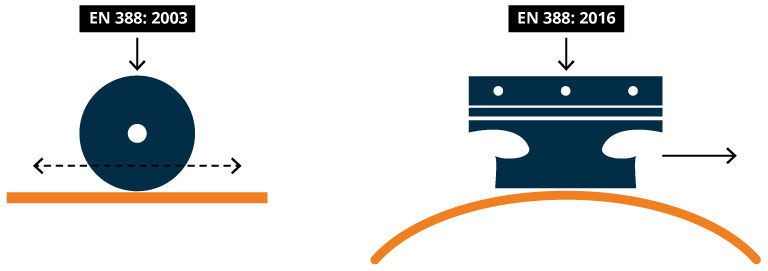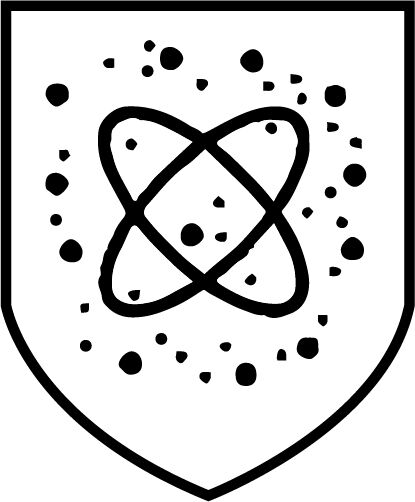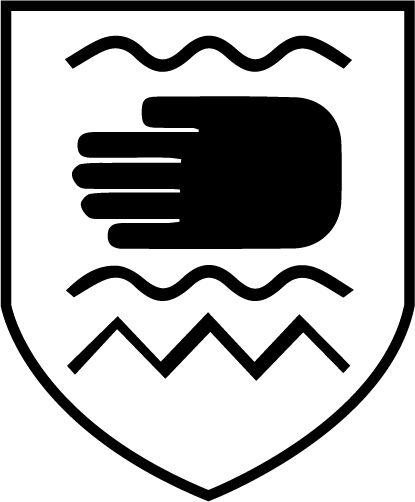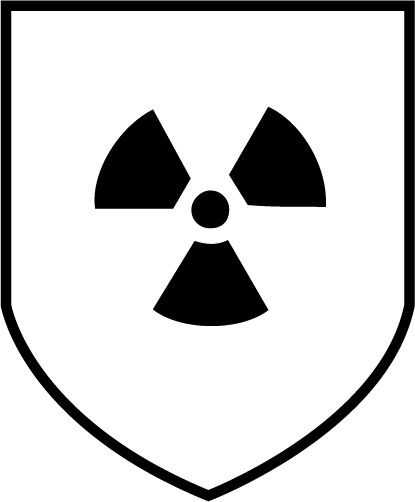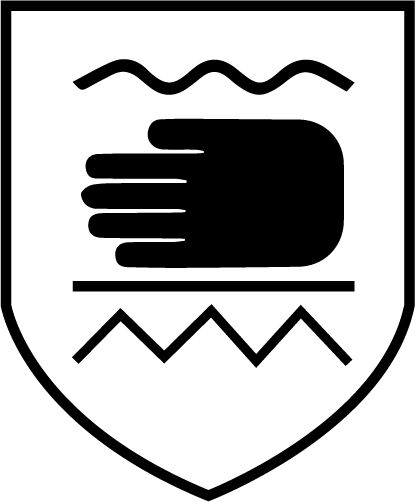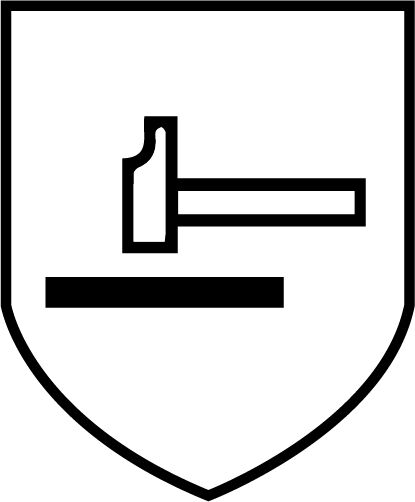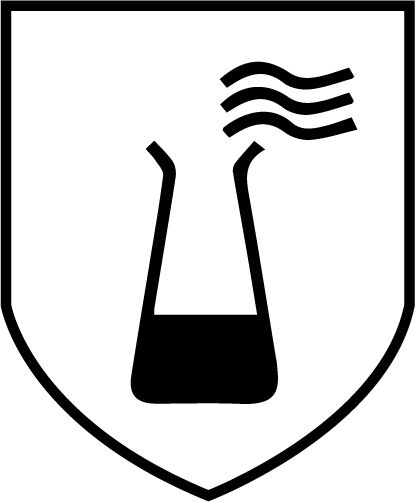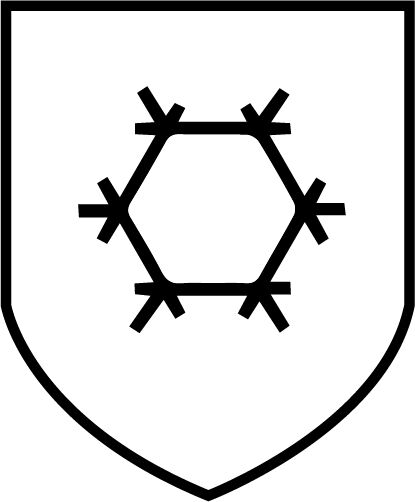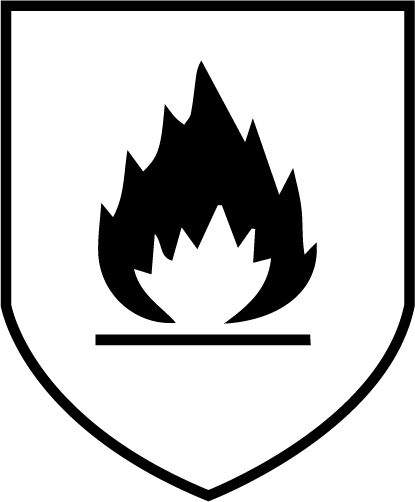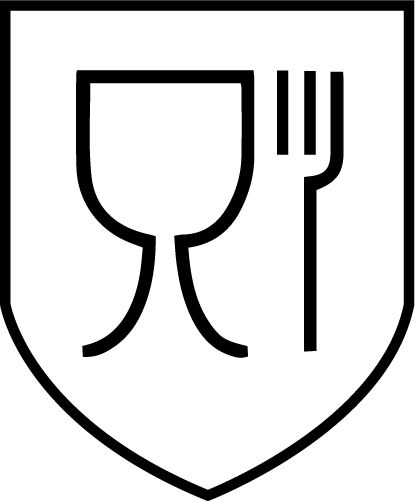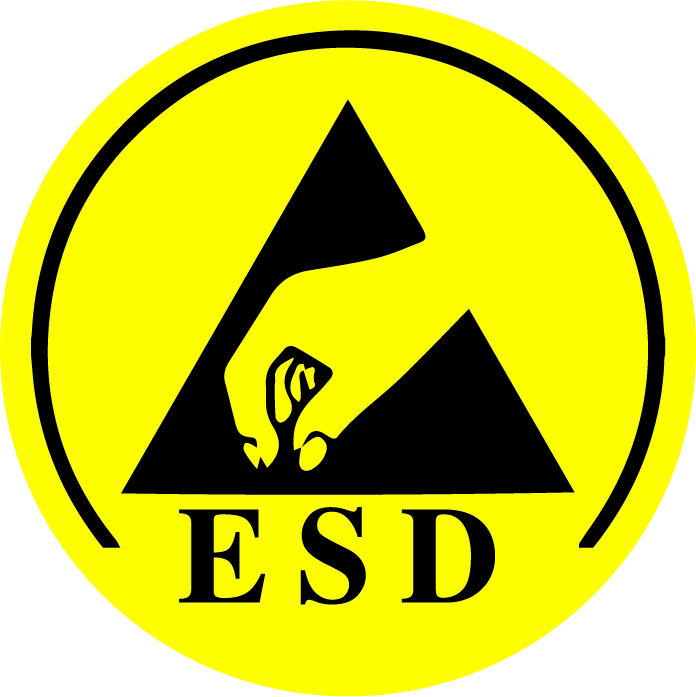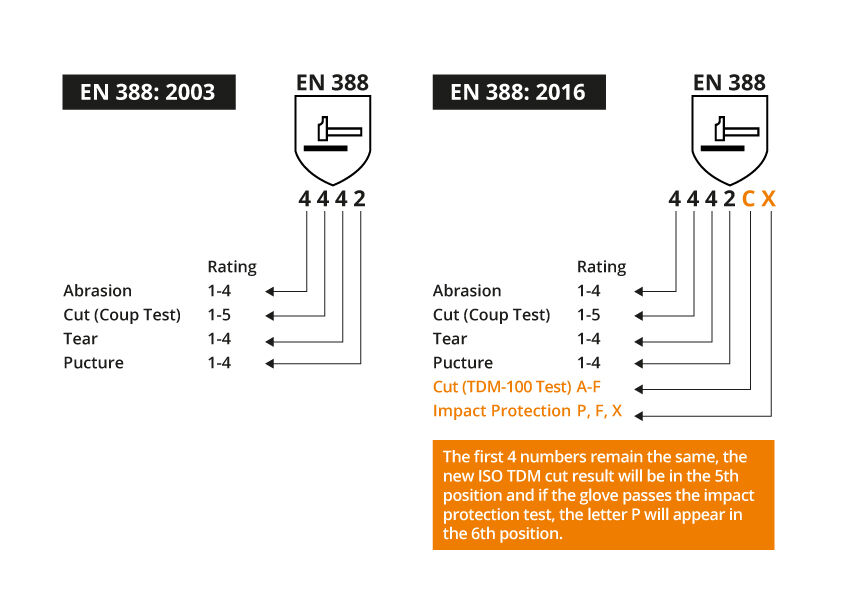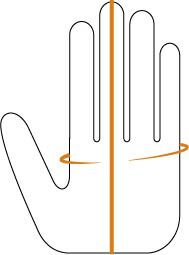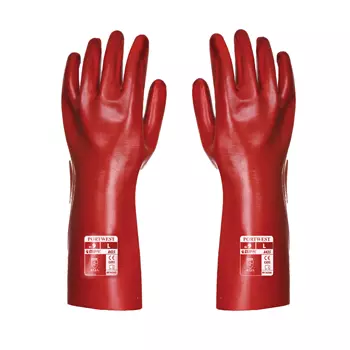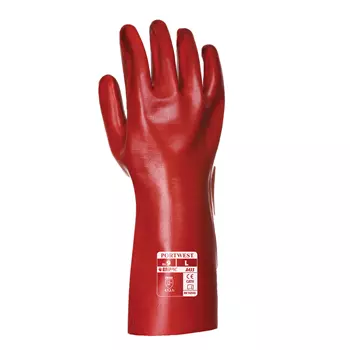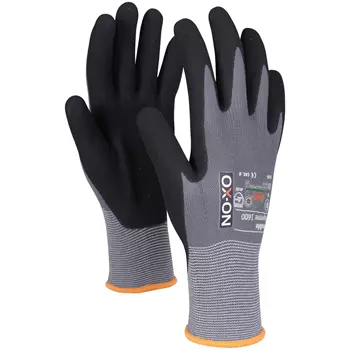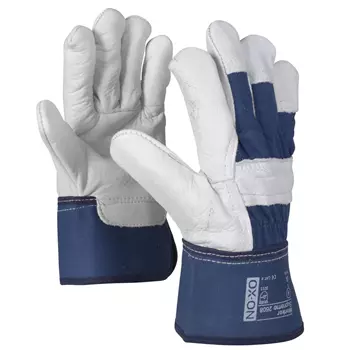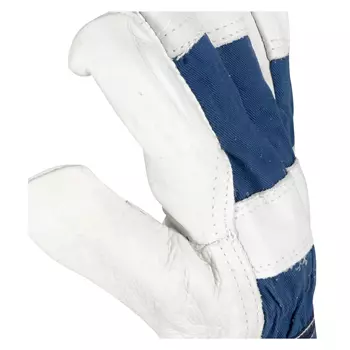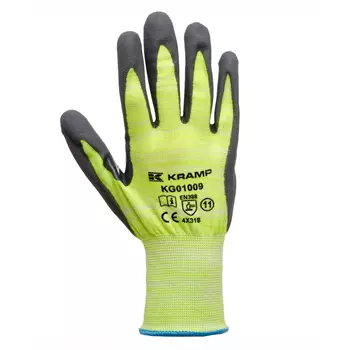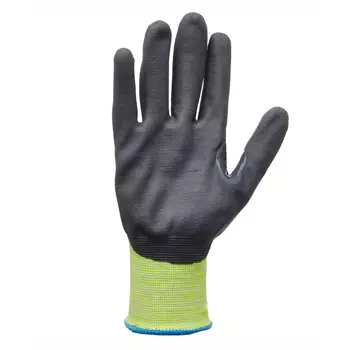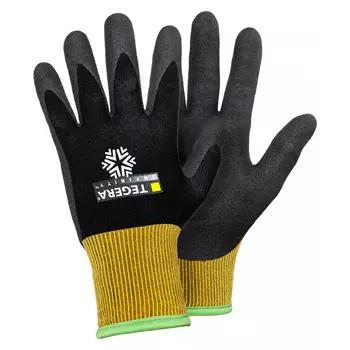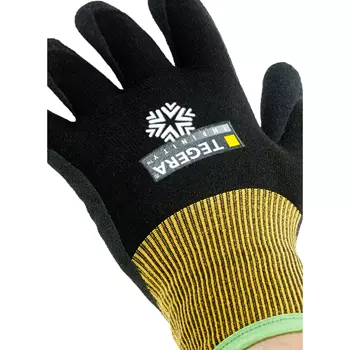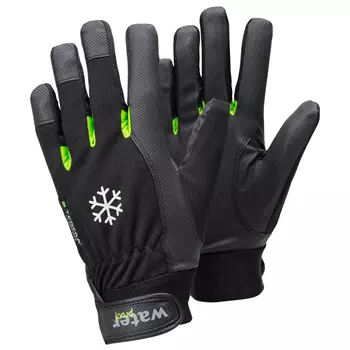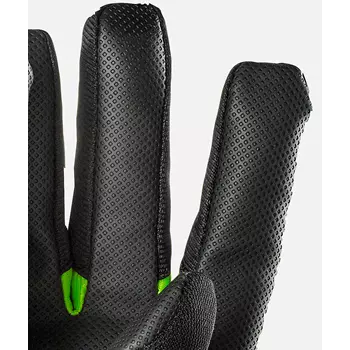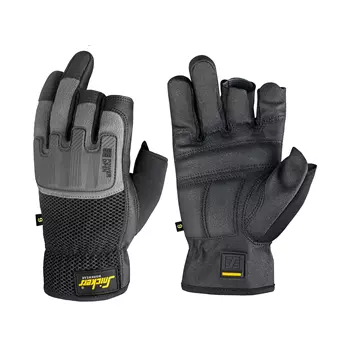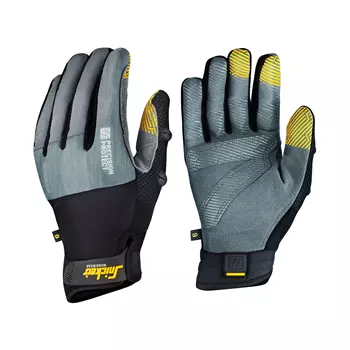How to choose the right gloves
This glove guide here will help you find the right type of protective gloves
Since there are so many different types of jobs, there are also many different types of gloves to suit individual industries. These could be assembly gloves, food-approved gloves, work gloves, welding gloves, cut-resistant gloves, anti-vibration gloves, gardening gloves and many more kinds of protective gloves.
Are you the do-it-yourself type who casts plinth, builds houses, lays driveways or paths in the garden? Many of the things we turn our hands to require gloves to protect our hands - not gloves that are all thumbs, of course.
Work gloves for concrete casting
When you work in concrete, for example in casting a plinth, you should protect your hands, as otherwise the concrete will corrode the fingers and dry them out so they crack. We can recommend work gloves that are fully or semi-dipped. This means that they feature a nitrile coating, which is a rubbery mass that makes them dense and resistant to "tough substances" like concrete. In addition, they are knitted, which means that they fit snugly to the wrists and prevent dirt getting in the glove.
See the entire range of gloves and work gloves here.
Gloves for laying driveways and patios
It is hard for fingers to grip concrete tiles. Therefore, it is a good idea to choose work gloves that protect the fingers from tiring work and provide you with a good grip on the tiles. These can be classic work gloves in cow split leather, which are very durable and suitable for rough work.
These can also be tight-fitting, knitted all-round work gloves with a dipped hand and elastic ribbing at the wrists. We must point out that the knitted gloves are not as durable as cow split leather work gloves. On the other hand, the knitted, dipped gloves offer greater finger feel.
Gardening gloves
Do not be trapped indoors like another Sleeping Beauty just because you do not have garden gloves to protect your fingers! Find your girl power with a pair of feminine garden gloves featuring print, ribbing at the wrist, and dots; small rubber pads that give you a good grip on the garden tools. You can also get strong, flexible work gloves in goatskin with fabric on the upper side of the hand. These garden gloves are very durable, provide good finger feel and are comfortable to work with. Others prefer fabric work gloves combined with cowhide in the places subject to the most wear. You have garden gloves for very strenuous gardening in such a pair. Once again, we are championing knitted, nitrile-dipped work gloves for gardening because they give you such good finger sensitivity, fit snugly to your wrist and prevent dirt from penetrating.
See the selection of garden gloves here
Food handling approved gloves
You only ever find out too late that beetroot juice is true to its colour! Therefore, the next time you peel beetroot, you may want to consider using food-grade gloves that both protect your hands and protect the food from bacteria. The reason they need to be food approved is to avoid harmful substances in the food from the gloves.
The selection of food approved gloves can be found here
Disposable gloves
Nitrile, latex, vinyl? How do you know what’s right for the job? If you don’t know which disposable gloves to choose, read here and learn more about the different kinds – it can be quite difficult to distinguish between them.
Latex gloves
Latex gloves are extremely stretchable, and provide a good grip during work. These gloves may be coated inside to prevent allergic reactions to latex. Some latex gloves are suitable for use in agriculture, industrial applications, work with chemicals, laboratories, and for cleaning. Others are approved for handling food and protect against chemical splashes; these are ideal for work in kitchens, the hotel and restaurant industry, healthcare, the care sector, and the service industry.
Nitrile gloves
You can also use disposable gloves in nitrile, a hypoallergenic material. Nitrile gloves are available with and without powder; deciding which type to use is a matter of personal preference. One reason for choosing powdered gloves is that the powder makes it easier to put on and take off the gloves. Nitrile gloves are approved for handling food.
Vinyl gloves
If you need gloves that are approved for medical use and are suitable for use in hospital, veterinary clinics, cleaning and the food industry, you can choose vinyl gloves.
Gloves for working with vibration tools
Are you shaken - by working with pneumatic drills, polishers and sanders? Then choose vibration gloves and shock-absorbing gloves. The common denominator amongst mechanical tools is that they cause vibrations, which can be harmful to the sensitivity and movement of the fingers. Mechanical vibrations from machines are dampened simply by using vibration gloves. If the vibration gloves are also shock-absorbing, they protect your hands from impact and shocks to the upper part of your hand.
Find the selection of vibration gloves and shock-absorbing gloves here.
Did you know that you can get gloves with touch, allowing you to operate your phone or screen with the gloves on? This is practical as it means you don’t have to take off your gloves when operating your phone!
Finding the right gloves can be tricky. We therefore want to help guide you through EN standards and glove categories, and the method of finding the right size, so you get a pair of gloves that fit perfectly and fully protect your hands.
Cut-resistant gloves
Cut-resistant gloves are available for work with knives and blades, sharp metal plates and glass, or even when it’s time to replace the blade in your hobby knife – in short, any time there is a risk of cutting yourself. You can prevent this by working with cut-resistant gloves, or Cut gloves, as they are also called.
It’s not the thickness of cut-resistant gloves that protects the hands but the fibres and other materials in the gloves. When choosing cut-resistant gloves, consider whether to opt for Cut B, C, D, E, or F.
Here are the cut resistance levels that the letters designate:
| Cut level | Force (N) | Cut resistance |
| A | > 2 | None |
| B | ≥ 5 | Low |
| C | ≥ 10 | Medium |
| D | ≥ 15 | Medium to high |
| E | ≥ 22 | High |
| F | ≥ 30 | Extremely high |
Standards for cut protection gloves
Cut-resistant gloves are an absolute necessity if your work puts you at risk of cutting yourself on knives and sharp blades. EN standards describe how these gloves are tested.
EN 388: 2003
Here, the so-called Coup method is used for the test, using a “pizza wheel”-style blade that repeatedly cuts across the glove at a constant pressure of 5 Newton (500 grams).
EN 388: 2016
This is the most recent version of the standard. The test is performed in this case using a razor blade with a variable pressure between 200 and 3,000 grams. In this test, the razor blade is changed after each cut across the glove.
Description of EN standards in gloves
You may be thinking "Why are all these standards needed?"
Standards have existed for a long time. Standards are a means of communication to achieve uniformity in products, among other things, wherever they are produced in the world.
Therefore, your protective gloves are marked with EN followed by a number. This is your guarantee that the glove meets the requirements. The chart below shows the symbols that can be seen on the different types of protective gloves, as well as a brief explanation of what they are protecting against.
What do glove categories mean?
Gloves can be divided into 3 categories according to EU Regulation 2016/425 when they are used for personal protection.
Category 1 gloves - CAT I
These are gloves used at low risk. They cover the general requirements for protective gloves and have a standard called EN 420. You can see the symbol for this standard in the diagram above with a description of EN standards.
Category 2 gloves - CAT II
These gloves can protect against medium risk. For example, welding gloves or industrial gloves that have been tested and type-approved by an EU approved testing institute fall into this category. The protective function of the gloves is shown by the symbols with which the gloves are marked.
Category 3 gloves - CAT III
The gloves protect against high risk. This includes extreme heat, cold or dangerous chemicals. There are ongoing quality control requirements for these gloves, as well as certification, type-approval and testing requirements.
If the gloves protect against mechanical risk, they are provided with a symbol for EN 388 and in addition 4-6 characters below the pictogram, depending on whether it is EN 388: 2003 or EN 388: 2016. The signs show test results for wear, cut-resistance, as well as puncture and tear-resistance. If there are no characters below the symbol, it is because they have not been tested for this.
Find your glove size
Measure the circumference of your hand and the length of your fingers. Below each pair of gloves in Cheap-workwear.com's webshop, you will find a size guide that tells you what size to choose, based on your needs.
See an example of a size guide here.
|
Size |
6 |
7 | 8 | 9 | 10 | 11 | 12 |
| Mens size | XXS | XS | S | M | L | XL | 2XL |
| Circumference around back of hand in cm |
15.2 | 17.8 | 20.3 | 22.9 | 25.4 | 27.9 | 30.4 |
| Length in cm | 16 | 17.1 | 18.2 | 19.2 | 20.4 | 21.5 | 22.6 |
We hope you are ready to choose the right type of protective gloves after reading this glove guide, to make sure your hands are optimally protected. At Cheap-workwear.com, you will find gloves from well-known brands such as OX-ON, Tegera, Portwest, WorkSafe, Blåkläder, Snickers Workwear and many more.
Still having trouble finding the right glove at Cheap-Workwear.com?
Should there be any glove types missing from our range, please contact customer service and we will try to find out if we can get those in for you.
Equally, we enjoy answering questions about gloves and how to choose protective gloves that fit the purpose you need them for.
Contact customer service at info@cheap-workwear.com or phone +45 9674 2030.

